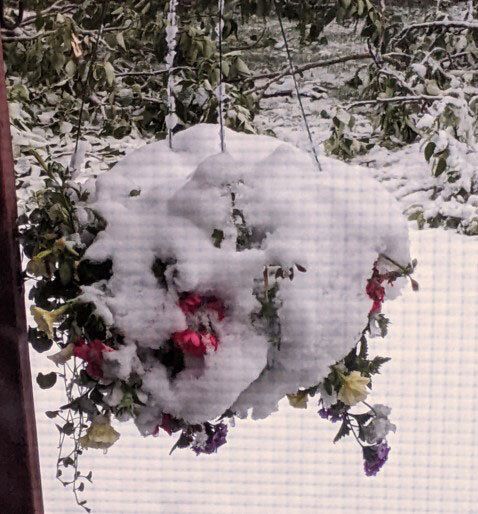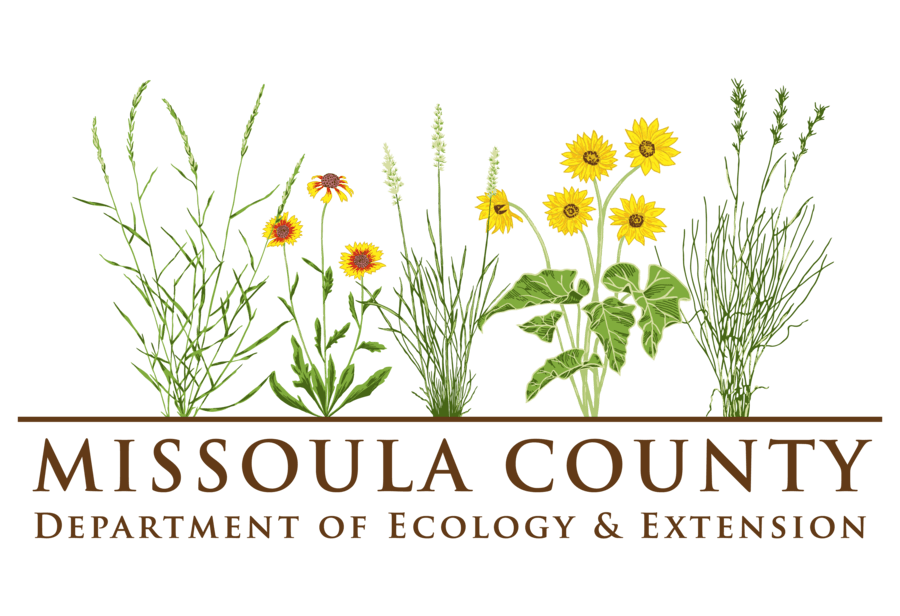
We are catching codling moths in pheromone traps this week and monitoring codling moth egg development. It has been slow due to the snow and cold weather. The least-toxic option for codling moth is Spinosad or neem oil. Malathion, Carbaryl, or permethrin are the hard-pesticide options
Fungal leaf spots, powdery mildew, and peach leaf curl are showing up in the landscape, they will go away if the weather dries out and you do not overhead irrigate. Cedar apple rust is being noticed on Junipers, which sends spores to its alternate hosts -apples and hawthorns. Spray the apples and hawthorns on a dry day with sulfur to protect them from infection.
We have seen green fruitworms on apples, pears, and even on raspberry leaves, but mostly in low numbers. Bt (Bacillus thuriengensis) is the least toxic option if fruitworms are causing a lot of injury. Fruit-tree leaf roller larvae are also present in low numbers. Apple skelatonizers are just starting to feed on apple leaves turning them brown. There is no need to treat for leaf rollers unless you find more than 4 worms curled up in the leaves in a 10 branch sample. Sawfly larva are turning up in the landscape, insecticidal soap will control or hand picking.
Tent caterpillars are present in increasing numbers. They are still in the stage where you’ll see “nests” of tent caterpillars. You can remove and destroy the nests or treat them with Bt (Bacillus thuriengensis).
Elm leaf miners and birch leaf miners are starting to cause small tan colored blotches on elm and birch leaves now. Leaf miners feed inside leaves. If more than 25% of the leaves on your birch or elm tree have tan blotches, you might consider spraying for leaf miners. The least-toxic options for Leaf miners are Spinosad and neem. Spray this weekend to next week for the second spray for Whitepine weevil on the tops of your spruce trees. Pine sawfly’s are feeding on pine trees now, insecticidal soap or azadirachtin will control them.
Aphid populations are increasing with this weather. Check susceptible trees and shrubs, such as plum, caragana, maples, dogwood, and roses now. Treat aphids with insecticidal soap or, add pyrethrum if > 50% of leaves are starting to curl. Ash leaf curl aphids are curling ash leaves now; it is to late to treat them. Eriophyid mites are causing yellow to brown blisters on apple, pear, and mountain ash leaves. It’s also too late to spray for blister and rust mites. Check the undersides of Virginia Creeper, apple, and rose leaves now for tiny, aphid-like leaf hopper larvae. If leaf hoppers turned Virginia Creeper leaves brown last year, spray insecticidal soap plus Pyrethrin as soon as you find leaf hopper larvae on leaf undersides.
Mountain Pine beetles are present as adults in trees that were attacked last year, but have not started to emerge yet. Remove and burn or debark pine trees that have beetles in them now ASAP. It is too early to apply pheromone treatments to healthy pine trees to prevent Mountain Pine Beetle attack. You can start looking for materials now. Mountain Pine Beetle options include the pheromone called Verbenone or a spray of the trunks of pine trees up to about 30’ with carbaryl.
Grasshoppers are hatching in grassy, south-facing areas. If in high numbers treating with an insecticide containing azadirchtin or pyrethrins.
If your trees and shrubs got bent over by last weeks snow, you will need to stake them for several months till they regain their strength.
Weeds are the main challenge to gardens now. Flea beetles are present on tomatoes and eggplants and Leafminers are present on spinach and swiss chard. Flea beetles can be treated with pyrethrum and Leafminers can be treated with Spinosad or neem or remove and destroy infested leaves. Soil temperatures are 60 F. You can start planting warm season crops, such as tomatoes, peppers, beans, squash & melons.
Be sure to start deep soaking to water your trees as the weather turns hot.
